事情的发生是有规律性的,这样我们才能预测天气、发射火箭、制造原子弹、将来甚至进行星际旅行。那么这些规律又是如何发现的呢?以前靠人,例如牛顿、爱因斯坦。那么以后会不会由机器来发掘呢?
Linear Regression
场景1 假设你是房地产销售人员,而且你手里有一些已经有一些已经成功售出的历史数据,如 表 1-1 所示。你想根据房屋面积来预测房子的售价,这个时候你应该怎么办?
表 1-1 历史数据
| 房屋面积(m²) | 售价(万) |
|---|---|
| 42 | 88 |
| 55 | 108 |
| 64 | 130 |
| 75 | 158 |
| 82 | 180 |
| 90 | 192 |
| 108 | 210 |
| 123 | 258 |
图 1-1 数据分布图 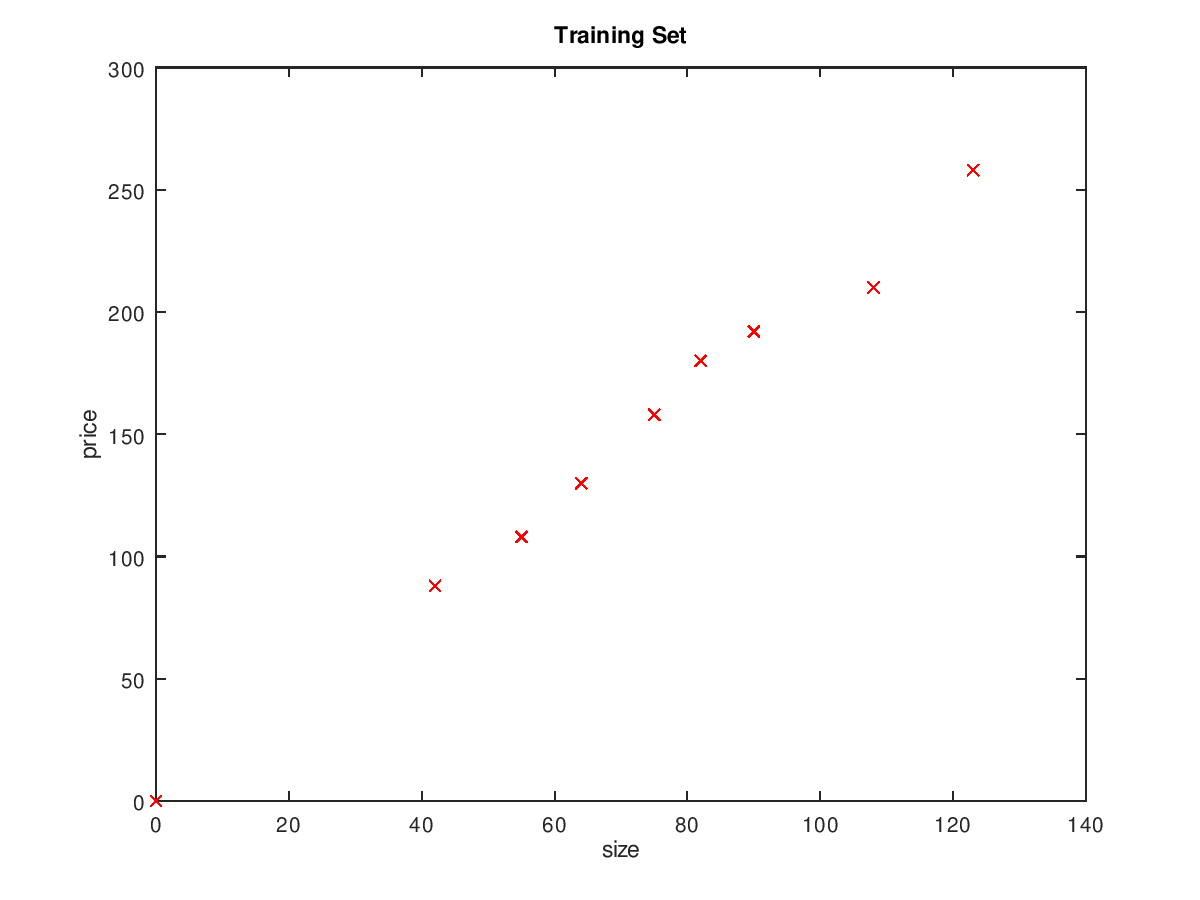
假想函数
观察数据分布图,我们容易发现它很像初中就接触过的线性函数——y=ax+b。这里我们就假设售价与房屋面积的关系为线性函数。即 假想函数(Hypothesis Function) 是
$$ h(x) = θ_0+θ_1x $$
有了假想函数,下一步需要做的事情就是确定假想函数中的各个参数的值,或者叫特征值(Features),这里我们有 \( θ_0 , θ_1 \) 这两个特征值。
我们分别做如下假设,图 1-2 中表示了各个假想函数的拟合结果:
- \(θ_0=150,θ_1=0 \),得到 假想函数 \( h(x) = 150 \)
- \(θ_0=0,θ_1=1 \),得到 假想函数 \( h(x) = x \)
- \(θ_0=0,θ_1=2 \),得到 假想函数 \( h(x) = 2x \)
图 1-2 各个假想函数的拟合结果 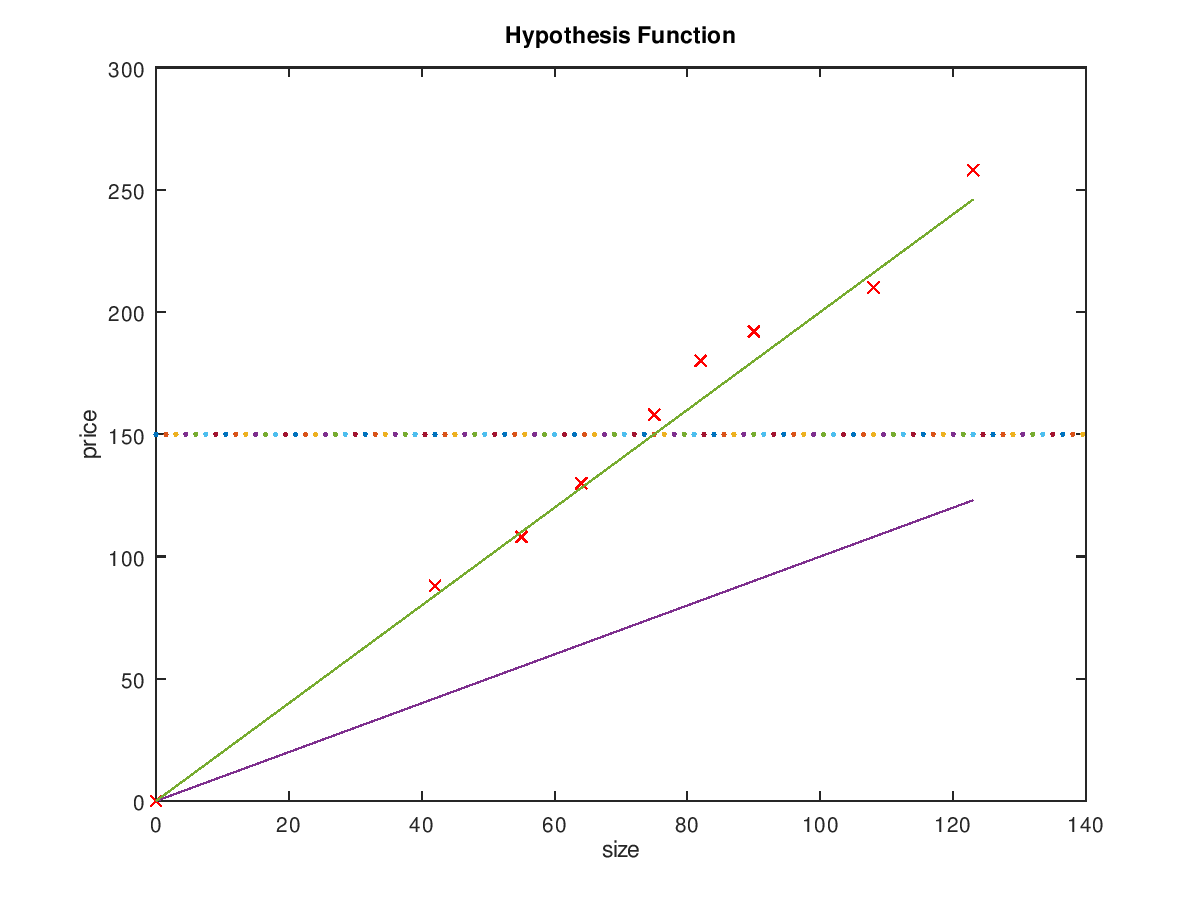
代价函数
从 图 1-2 中我们很明显的可以看到,\( θ_0=0,θ_1=2 \) 时拟合的结果最好。
提问1 除了用经验来判断拟合结果的好坏,有没有能量化比较的方法呢?
答案是肯定的,这就是代价函数(Cost Function)。
$$J(θ_0,θ_1) = \frac 1 {2m} \sum_{i=0}^{m} (h_θ(x_i)-y_i)^2 $$
1 | 注:有的公式符号前面需要加转义字符 \,例如 _,应该写成 \_ |
- \( (h_θ(x_i)-y_i)^2 \)。表示假想函数求出来的值减去实际值的平方
- \( \sum_{i=0}^{n} \)。表示从 i=0 累加到 i=n
随着 \( θ_0,θ_1 \) 的取值不同,代价函数 \( J(θ_0,θ_1) \) 的结果值如 图 1-3 所示
图 1-3 代价函数的结果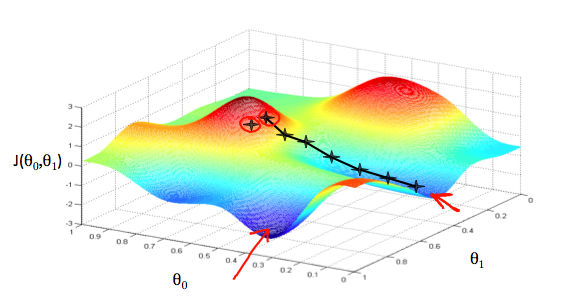
代价函数表示的是假想函数的拟合程度,代价函数求出来的值越小,说明拟合的越成功。现在的问题已经变成了如何求代价函数的最小值。
梯度下降
梯度下降(Gradient Descent)定义如下:
$$ θ_j=θ_j-α \frac δ {δθ_j} J(θ_0,θ_1) $$
图 1-4 梯度下降的几何含义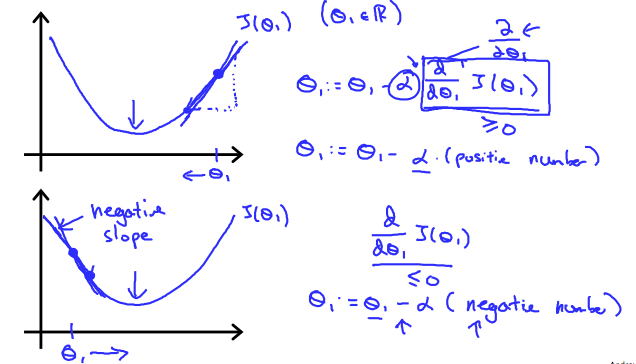
需要注意的是:在每次迭代中,应该同时更新参数。在这里需要同时更新 \( θ_0,θ_1\)
- \( temp0:=θ_0-α \frac δ {δθ_0} J(θ_0,θ_1) \)
- \( temp1:=θ_1-α \frac δ {δθ_0} J(θ_0,θ_1) \)
- \( θ_0=temp0 \)
- \( θ_1=temp1 \)
图 1-5 α 取值的影响 
实际操作中,我们需要及时调整参数 α,以确保梯度下降算法在合理的时间内收敛。未能收敛或取得最小值的时间太多意味着我们的步长是错误的。
octave 代码实现
图 1-6 J(θ)求偏导 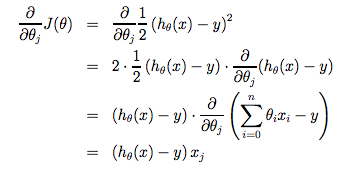
执行结果如下:
X-y-theta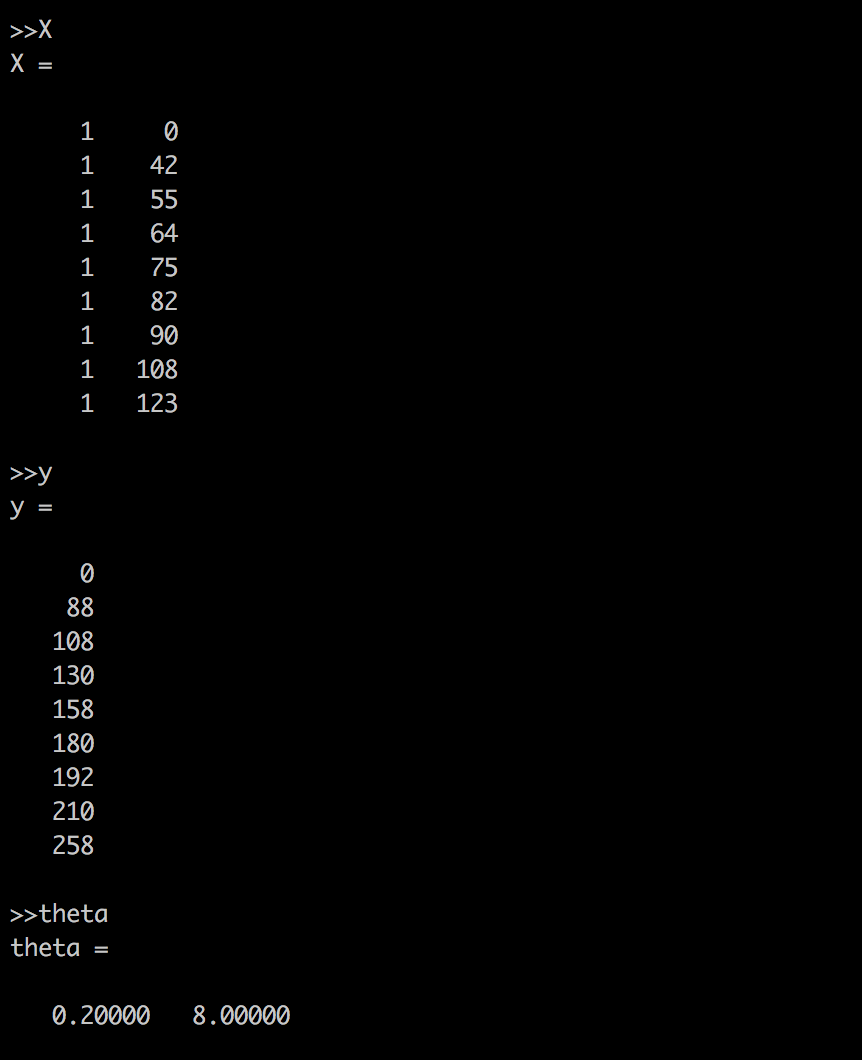
iterator-result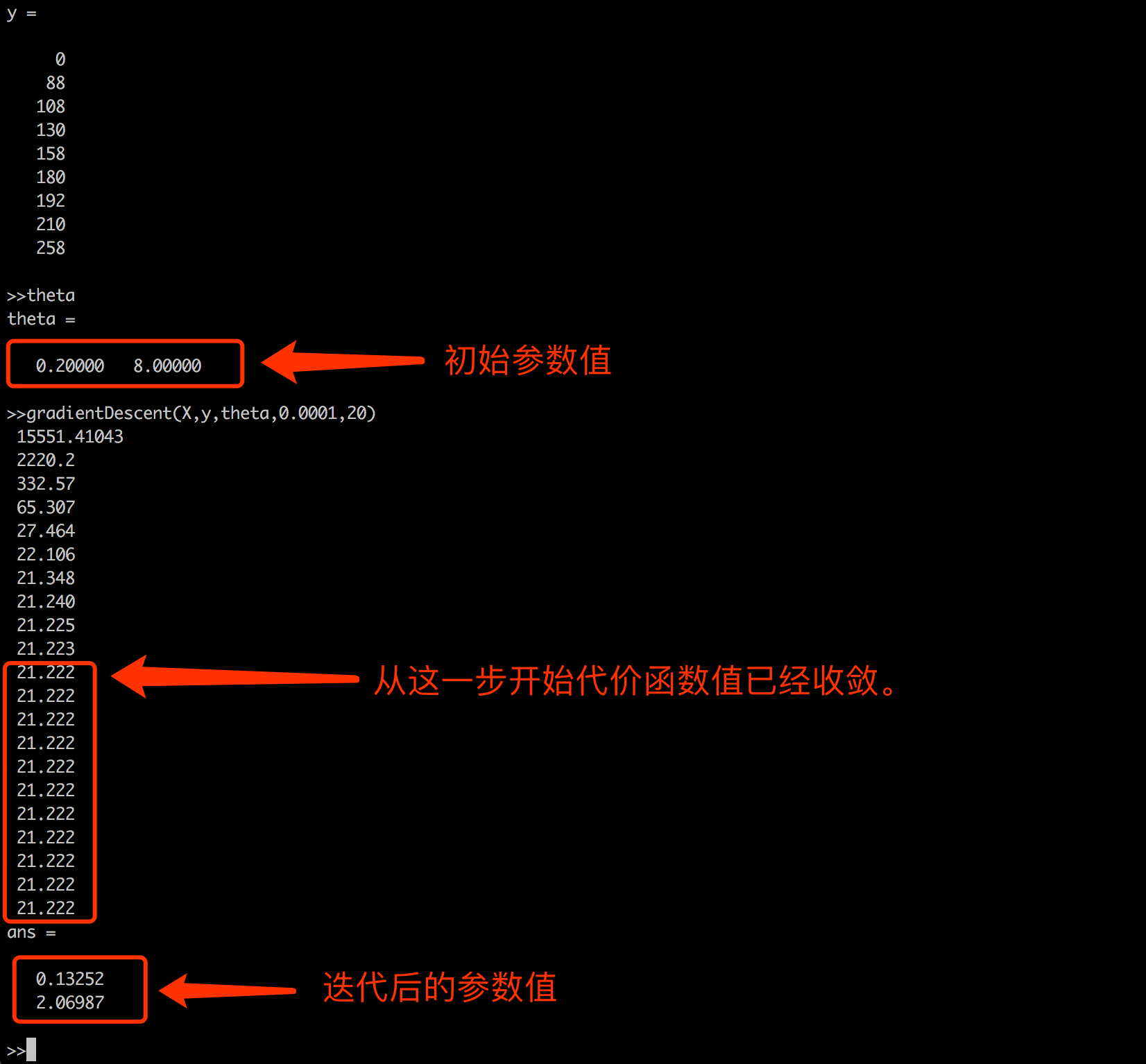
Cost Function
1 | function J = computeCost(X, y, theta) |
Gradient Descent
1 | function [theta, J_history] = gradientDescent(X, y, theta, alpha, num_iters) |